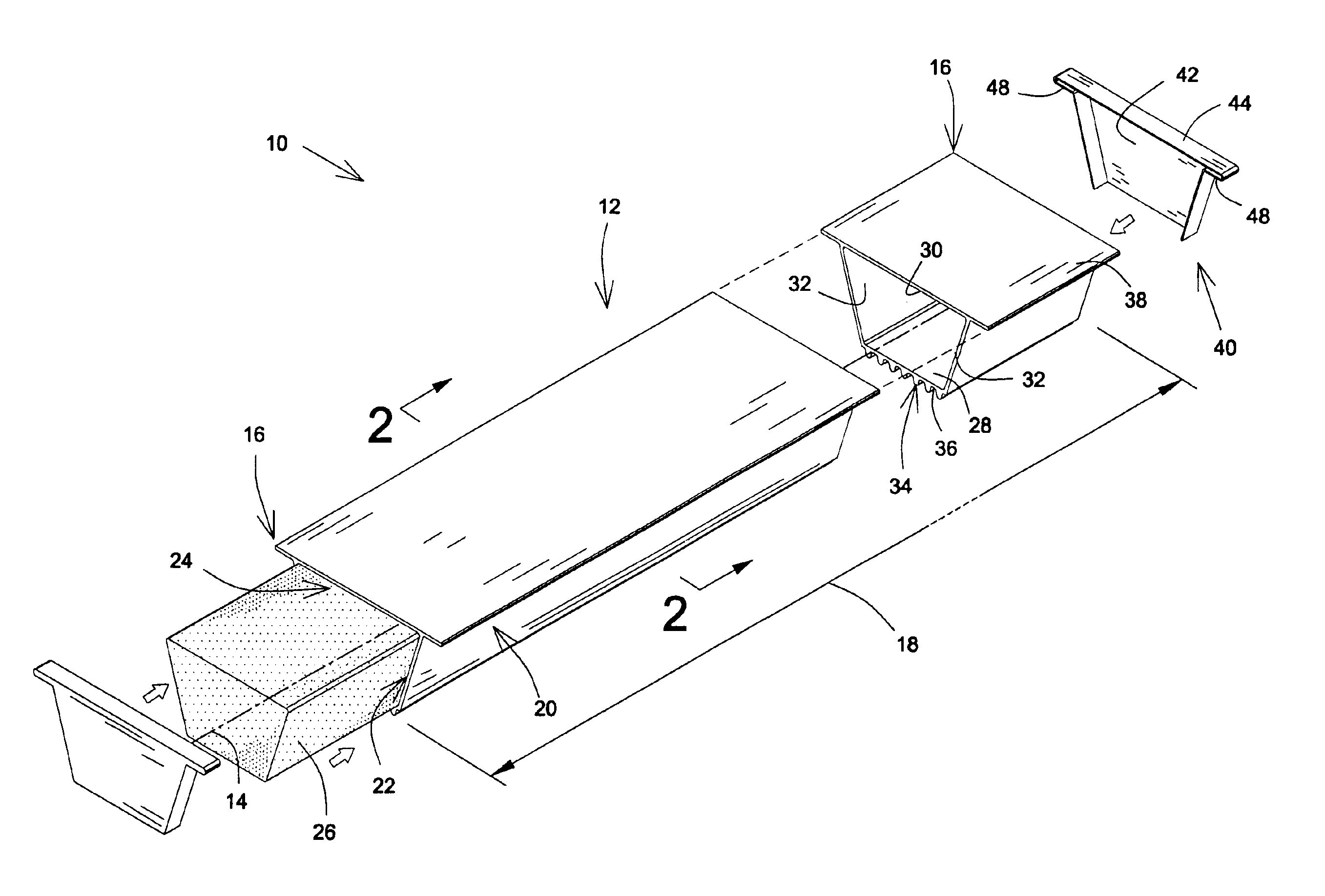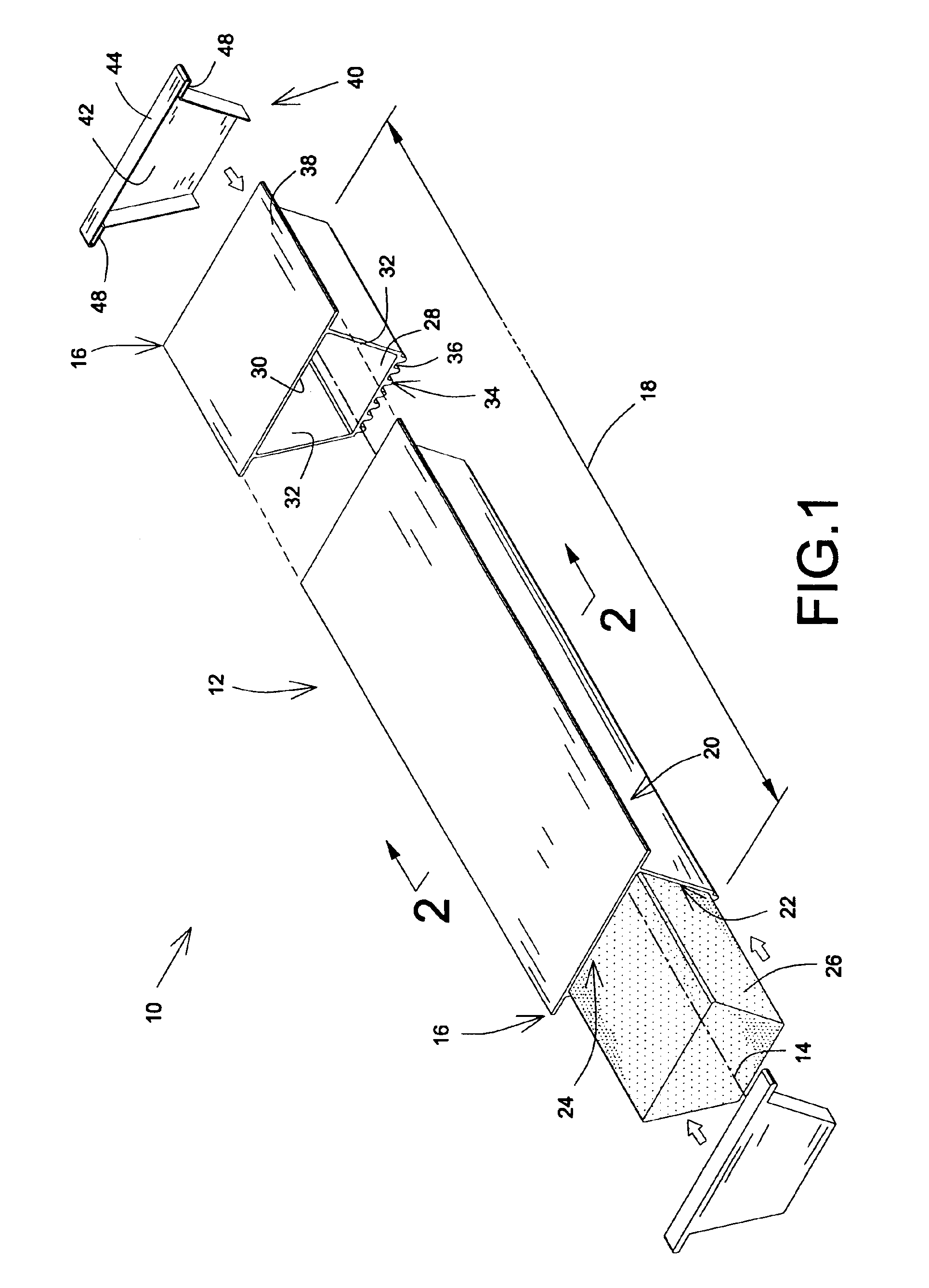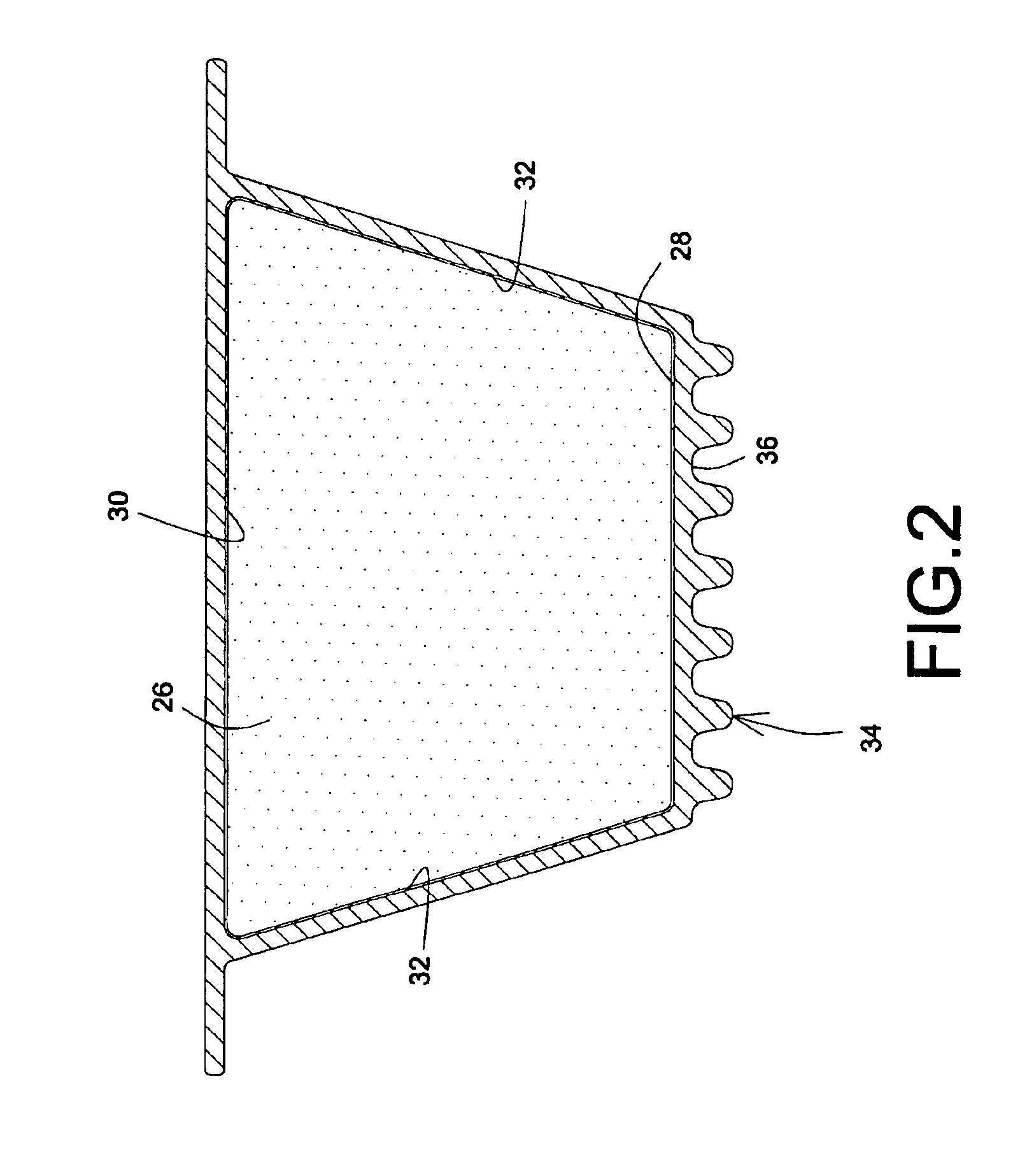Pontoon with shell therefor
- Summary
- Abstract
- Description
- Claims
- Application Information
AI Technical Summary
Benefits of technology
Problems solved by technology
Method used
Image
Examples
Embodiment Construction
Referring to FIG. 1, there is shown a pontoon 10, in accordance with an embodiment of the present invention. The pontoon 10 includes a generally elongated shell 12. The shell 12 defines a shell longitudinal axis 14, a pair of generally opposed shell longitudinal ends 16 and a shell length 18 extending along the shell longitudinal axis 14 between the shell longitudinal ends 16.
The shell 12 has a shell peripheral wall 20 surrounding a shell inner volume 22. The shell peripheral wall 20 defines at least one end aperture 24 extending into the shell inner volume 22 from one of the shell longitudinal ends 16. Typically, as illustrated throughout the figures, the shell peripheral wall 20 defines a pair of opposed end apertures 24 (only one of which is shown in FIG. 1) both extending into the shell inner volume 22 from opposed shell longitudinal ends 16. Alternatively, the shell peripheral wall 20 may define a single end aperture 24, the opposed section of the shell peripheral wall 20 being...
PUM
| Property | Measurement | Unit |
|---|---|---|
| Volume | aaaaa | aaaaa |
Abstract
Description
Claims
Application Information
 Login to View More
Login to View More - R&D
- Intellectual Property
- Life Sciences
- Materials
- Tech Scout
- Unparalleled Data Quality
- Higher Quality Content
- 60% Fewer Hallucinations
Browse by: Latest US Patents, China's latest patents, Technical Efficacy Thesaurus, Application Domain, Technology Topic, Popular Technical Reports.
© 2025 PatSnap. All rights reserved.Legal|Privacy policy|Modern Slavery Act Transparency Statement|Sitemap|About US| Contact US: help@patsnap.com



